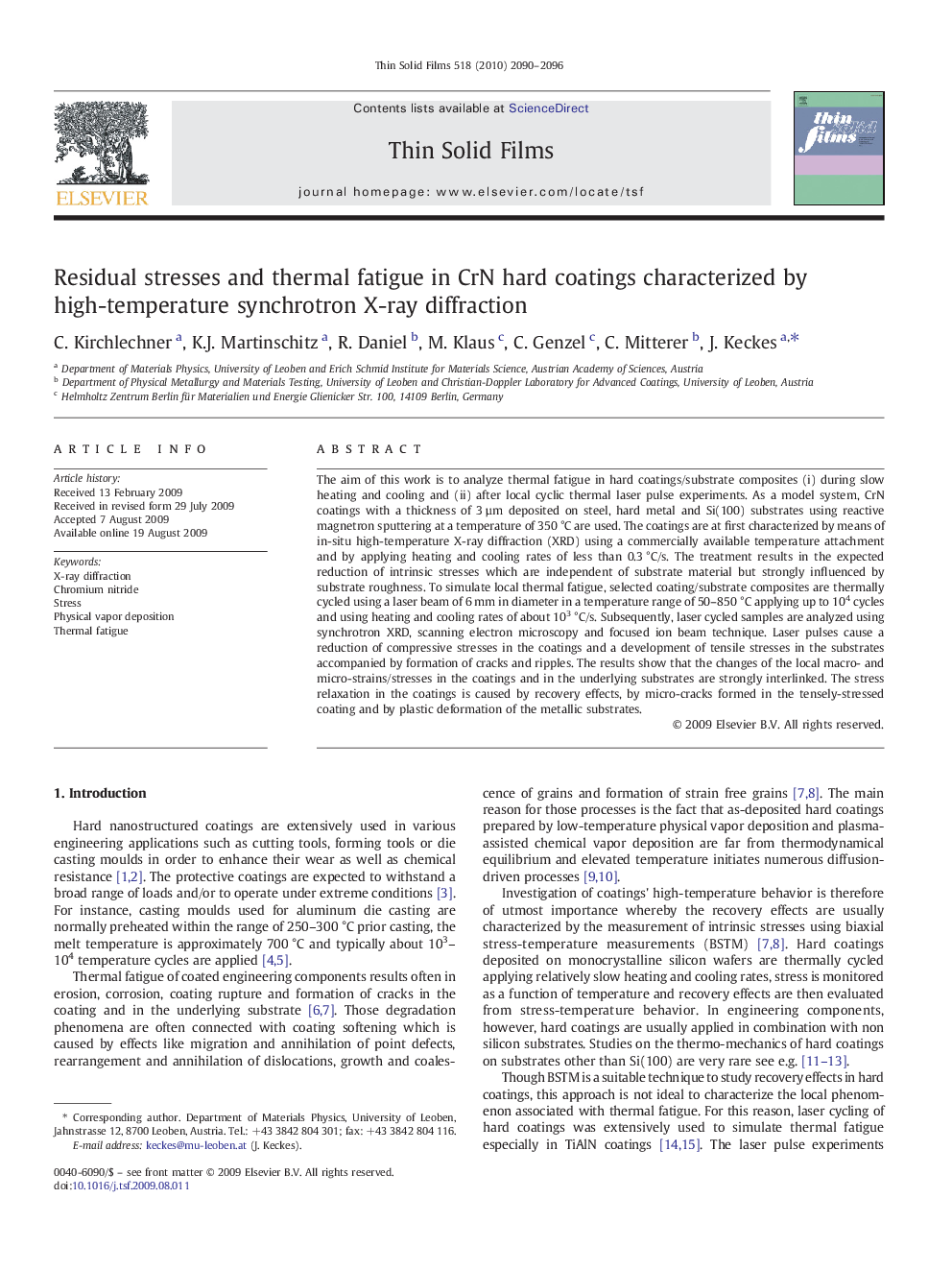| Article ID | Journal | Published Year | Pages | File Type |
|---|---|---|---|---|
| 1671793 | Thin Solid Films | 2010 | 7 Pages |
The aim of this work is to analyze thermal fatigue in hard coatings/substrate composites (i) during slow heating and cooling and (ii) after local cyclic thermal laser pulse experiments. As a model system, CrN coatings with a thickness of 3 µm deposited on steel, hard metal and Si(100) substrates using reactive magnetron sputtering at a temperature of 350 °C are used. The coatings are at first characterized by means of in-situ high-temperature X-ray diffraction (XRD) using a commercially available temperature attachment and by applying heating and cooling rates of less than 0.3 °C/s. The treatment results in the expected reduction of intrinsic stresses which are independent of substrate material but strongly influenced by substrate roughness. To simulate local thermal fatigue, selected coating/substrate composites are thermally cycled using a laser beam of 6 mm in diameter in a temperature range of 50–850 °C applying up to 104 cycles and using heating and cooling rates of about 103 °C/s. Subsequently, laser cycled samples are analyzed using synchrotron XRD, scanning electron microscopy and focused ion beam technique. Laser pulses cause a reduction of compressive stresses in the coatings and a development of tensile stresses in the substrates accompanied by formation of cracks and ripples. The results show that the changes of the local macro- and micro-strains/stresses in the coatings and in the underlying substrates are strongly interlinked. The stress relaxation in the coatings is caused by recovery effects, by micro-cracks formed in the tensely-stressed coating and by plastic deformation of the metallic substrates.
